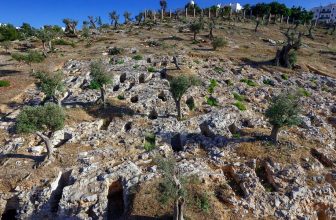
Studies of urbanisation deal with city ward
movement and modes of settlement; those of the 1950s-1970s urban anthropology
heydays concerned Third World ‘peasants in cities’, the ‘adaptive functions’ of
kinship and voluntary associations, and the persistence and creation of ethnic
identities and political organization.
In anthropology the
study of the process of Urbanisation started with a debate on weather rural and
urban are two distinctively identifiable and isolated poles or not. The long
history of ethnographic research especially because of the dominant paradigm of
functionalism, scholars have been of the perception that villages were self
sufficient units that doesn’t really have a strong connection with the urban
centres. This very notion began to change with the Robert Redfield who
developed a model of connection between the rural and urban poles, which is
known as the folk-urban continuum. He
tried to classify different types of community and historic process, which he
illustrated with examples from the Yucatan peninsula of Mexico (Redfield 1941).
At one end of the continuum was the “modern” city of Merida, while at
the other was a small, “traditional” indigenous village. These two
communities represented the most and the least developed types. In comparing
them Redfield examined their respective technology, social organization, and
worldview (Miner 1952). Thus Merida was a modern city populated with many
individuals who participated in national and international affairs, were
relatively free to make social and economic decisions, and had modern
worldviews. In contrast the “Indians” of the village lived from
foraging (see foragers) and swidden agriculture. They had a prescientific
worldview and unlike the individual freedom and modernity of the urbanites,
they were tightly incorporated into familial and community social relationships
that restricted personal freedom. Intermediate between these polar extremes
Redfield identified two other communities: a commercial rural “town”
with close ties to the city, and the peasant community of Chan Kom, which had a
mix of “traditional” and “modern” features but more closely
resembled the village. Redfield saw historical change as occurring by the diffusion
of modern technology, social forms, and ideas outward from the city toward the
folk end of the continuum in a gradual process of modernization.
Robert Redfield later
on collaborated with Milton Singer to study the process of urbanisation. With
their intensive studies they argued that city is
the center of change and that this susccptibility to change is reflected in two
types of cities a) orthogenetic and b) heterogenetic. Recognizing the classic
distinction between the preindustrial and post-industrial cities, they
classified all postindustrial cities as heterogenetic. The orthogenetic city is
one which is the center of native bureaucratic functions. Its population is relativelv
homogeneous in culture of origin. These centers became the centers of a) Primary urbanization. The trend of
primary urbanisation is to coordinate political economic, educational,
intellectual and aesthetic activities to the norms provided by Great Tradition.
In this process of urbanization the cultural role of the city is to maintain and
continuously reintegrate the Great Tradition by injecting elements of Little
Tradition through interaction of the city and peasantry. Redfield and Singer
state that this form of the city is basically conservative. Although some
change does take place as city and countryside interact with each other. They
suggest that there is continuity between aspects of the Great Tradition at different
points in time. Examples of this form of urbanization include Benares in India
and Peking (Peiping) in China.
While orthogenetic cities formed by primary urbanization
are preindustrial, heterogenetic cities include one elements of preindustrial
city and postindustrial types. Heterogenetic cities include people of different
cultural origins as well as from places outside the local social worlds. In such cities these outside influences are from
beyond the political boundaries of the state itself; in other cases, they are from
beyond the immediate hinterland. The main function of such cities as a place
for the exchange of goods and services require standardized value. As a place the
divergent cosmologies and lifestyle are juxtaposed, the city becomes a narrator
or sources of new ideas. If we refer back to the distinction previously made between
great and Little tradition. A heterogenetic city of the preindustrial type is one
in which a variety of Great Traditions interact with one another. Shifting our
attention to the postindustrial heterogenetic city, we discover two types: the
new administrative city and the financial city. The process of secondary
urbanisation works in the industrial phase of the city, and is characterised by
heterogenetic development. Thus, the effects of secondary urbanisation are
those of disintegration. They opine that: “the general consequence of secondary
urbanisation is the weakening of suppression of the local and traditional
cultures by states of mind that are incongruent with those local cultures.” The
first type carries forward the regional tradition, and the city becomes its
epi-centre, the second type bring external elements to the city.
[Youtube link to the class lecture: https://www.youtube.com/watch?v=E2uWn-Qr0oc]






